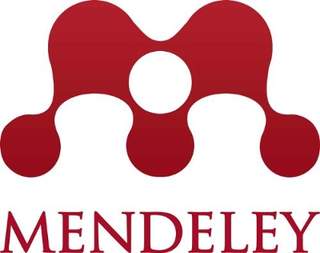STRATEGY OF MANGROVE MANAGEMENT IN NGURAH RAI GRAND FOREST PARK.
Abstract
Keywords
Full Text:
PDFReferences
Abdullah, K., Said, A.M., & Omar, D. (2014). Community-based conservation in managing mangrove rehabilitation in Perak and Selangor. Procedia-Social and Behavioral Sciences, 153, 121–131.
Ambinari, M., Darusman, D., Alikodra, H., & Santoso, N. (2016). Penataan peran para pihak dalam pengelolaan hutan mangrove di perkotaan: Studi kasus pengelolaan hutan mangrove di Teluk Jakarta. Jurnal Analisis Kebijakan Kehutanan, 13 (1), 29–40.
Dinas Kehutanan Provinsi Bali. (2014, Maret). Kebijakan pembangunan kehutanan Provinsi Bali dalam mendukung pelestarian mangrove di Provinsi Bali. (Bahan presentasi Dinas Kehutanan Provinsi Bali di Klungkung). Klungkung, 4 Maret 2014.
Febryano, I., Suharjito, D., Darusman, D., Kusmana, C., & Hidayat, A. (2015). Aktor dan relasi kekuasaan dalam pengelolaan mangrove di Kabupaten Pesawaran, Provinsi Lampung, Indonesia. Jurnal Analisis Kebijakan Kehutanan, 12 (2), 123–138.
Feka, Z.N. (2015). Sustainable management of mangrove forests in West Africa: A new policy perspective. Ocean and Coastal Management, 116, 341–352.
Ferreira, A. C., Ganade, G., & de Attayde, J. . (2015). Restoration versus natural regeneration in a neotropical mangrove: effects on plant biomass and crab communities. Ocean and Coastal Management, 110, 38–45.
Heriyanto, N., & Subiandono, E. (2016). Peran biomasa mangrove dalam menyimpan karbon di Kubu Raya Kalimantan Barat. Jurnal Analisis Kebijakan Kehutanan, 13 (1), 1–12.
Hill, T., & Westbrook, R. (1997). SWOT analysis: It’s time for a product recall. Long Range Plan, 30, 46–52.
Kajanus; Leskinen; Kurttila; Kangas. (2012). Making use of MCDS methode in SWOT analysis - lesson learnt in strategic natural recources management. Forest Policy Econimics, 20, 1–9.
Karlina, E., Kusmana, C., Marimin, & Bismark, M. (2016). Analisis keberlanjutan pengelolaan hutan lindung mangrove di Batu Ampar, Kabupaten Kubu Raya, Provinsi Kalimantan Barat. Jurnal Analisis Kebijakan Kehutanan, 13 (3), 201--219.
Kementerian Lingkungan Hidup dan Kehutanan. (2015). Peta kepekaan lingkungan pesisir dan laut Teluk Benoa Bali. (Laporan Akhir). Jakarta: Kementerian Lingkungan Hidup dan Kehutanan.
Kurttila, M., Pesonen, M., Kangas, J., & Kajanus, M. (2000). Utilizing the analytic hierarchy process (AHP) in SWOT analysis — a hybrid method and its application to a forestcertification case. Policy Economic, 1, 46–52.
Kusumanegara, A. (2015, September). Selamat datang di kawasan Taman Hutan Raya Ngurah Rai. (Bahan presentasi pada kunjungan Pemerintah Daerah Provinsi Kalimantan Timur). Denpasar: 15 September 2015.
Miteva, D. A., Murray, B. C., & Pattanayak, S. K. (2015). Do protected areas reduce blue carbon emissions? A quasi-experimental evaluation of mangroves in Indonesia. Ecological Economics, 119, 127–135.
Nguyen, T.P., Tam, N.V., Quoi, L.P., & Parnell, K.E. (2016). Community perspectives on an internationally funded mangrove restoration project: Kien Giang Province, Vietnam. Ocean and Coastal Management, 119, 146– 154.
Peraturan Pemerintah Nomor 7 Tahun 1999 tentang Pengawetan Jenis Tumbuhan dan Satwa.
Peraturan Pemerintah Republik Indonesia Nomor 28 Tahun 2011 Tentang Kawasan Suaka Alam dan Kawasan Pelestarian Alam.
Pickton, D., & Wright, S. (1998). What’s SWOT in strategic analysis? Strategic Change, 7, 101– 109.
Qodrina, P., Hamidy, R., & Zulkarnaini. (2012). Valuasi ekonomi ekosistem mangrove di Desa Teluk Pambang Kecamatan Bantan Kabupaten Bengkalis Provinsi Riau. Jurnal Ilmu Lingkungan , 6 (2), 1--6.
Rangkuti, F. (1997). Analisis SWOT : Teknik membedah kasus bisnis - reorientasi konsep perencanaan strategis untuk menghadapi abad 21. Jakarta: Gramedia Pustaka Utama.
Rauch, P., Wolfsmayr, U., Borz, S.A., Triplat, M., Krajnc, N., Kolck, M., … Handlos, M. (2015). SWOT analysis and strategy development for forest fuel supply chains in South East Europe. Forest Policy and Economic, 61, 87-94.
Reichel, C., Frӧmming, U.U., & Glaser, M. (2009). Conflicts between stakeholders groups affecting the ecology and economy of the Segara Anakan region. Regional Environmental Change, 9, 335–343.
Salampessy, M. ., Febryano, I. ., Martin, E., Siahaya, M., & Papilaya, R. (2015). Cultural capital of the communities in the mangrove conservatiom in the coastal areas of Ambon Dalam Bay, Moluccas, Indonesia. Procedia Environmental Sciences, 23, 222–229.
Scolozzi, R., Schirpke, U., Morri, E., & D’Amato, D. (2014). Ecosystem service-based SWOT analysis of protected areas for conservation strategies. Journal of Environmental Management, 146, 543–551.
Undang-Undang Nomor 5 Tahun 1990 tentang Konservasi Sumber Daya Alam Hayati dan Ekosistemnya.
UPT Taman Hutan Raya Ngurah Rai. (2012). Wisata Alam Taman Hutan Raya. Denpasar: UPT Taman Hutan Raya Ngurah Rai.
UPT Taman Hutan Raya Ngurah Rai. (2015). Penataan blok pengelolaan Tahura Ngurah Rai. Denpasar: UPT Taman Hutan Raya Ngurah Rai.
Van Oudenhoven, A.P.E., Siahainenia, A.J., Sualia, I., Tonneijck, F. H., van der Ploeg, S., de Groot, R., … Leemans, R. (2015). Effects of different management regimes on mangrove ecosystem services in Java, Indonesia. Ocean and Coastal Management, 116, 353–367.
DOI: https://doi.org/10.20886/jakk.2017.14.1.61-77
Copyright (c) 2017 Jurnal Analisis Kebijakan Kehutanan

This work is licensed under a Creative Commons Attribution-NonCommercial-ShareAlike 4.0 International License.



